Sotheby's International Realty
- 138 Avenue Victor Hugo
- 75116 PARIS, France
- +33 1 40 60 50 00
Sotheby's International Realty
- 50 rue d'Auteuil
- 75016 PARIS, France
- +33 1 56 26 56 55
Sotheby's International Realty
- 82 Avenue de Wagram
- 75017 PARIS, France
- +33 1 46 22 27 27
Sotheby's International Realty
- Place Sainte Foy - 2 Rue de Chézy
- 92200 NEUILLY, France
- +33 1 41 43 06 46
Sotheby's International Realty
- Place Sainte Foy - 2 rue de Chézy
- 92200 NEUILLY, France
- +33 1 41 25 00 00
Sotheby's International Realty
- 37-39 rue de Turenne
- 75003 PARIS, France
- +33 1 48 87 14 41
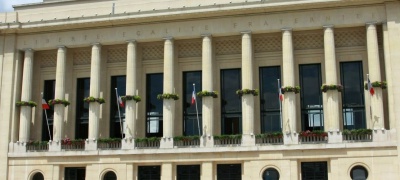
Puteaux
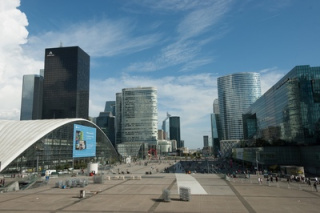
Prestige and Comfort in Puteaux
Puteaux, nestled to the west of Paris, is a dynamic and expanding commune that harmoniously combines modernity and tradition. Including the La Défense business district, Puteaux offers an exceptional living environment with a unique blend of contemporary architecture and historical charm. The city is highly sought after for its prestigious real estate, offering high-end residences ranging from modern apartments to elegant private mansions.
A Privileged Living Environment
Living in Puteaux means enjoying a high-quality environment where everything is within reach. Residents benefit from a wide range of amenities and services, including local shops and gourmet restaurants. Cultural and sports infrastructures, such as the Théâtre de Puteaux, the Jean-Baptiste Lully Conservatory, and numerous sports complexes, enrich daily life and offer many leisure options for all ages.
Activities and Leisure
Puteaux is also known for its green spaces, such as the Parc de l'Île de Puteaux, providing an idyllic setting for walks, outdoor sports activities, and family relaxation. The developed Seine quays offer a breathtaking view of the river and are a favorite spot for joggers and cyclists.
Local events, such as markets, festivals, and exhibitions, contribute to creating a friendly and dynamic atmosphere, making Puteaux a great place to live.
Prestigious Real Estate in Puteaux
The real estate market in Puteaux is booming, with constantly rising square meter prices. In July 2024, the average price per square meter for studios and one-bedroom apartments ranges from €7,691 to €9,647.
The real estate in Puteaux is varied and meets the expectations of the most demanding buyers. There are spacious and bright apartments, often located in modern buildings with high-end amenities such as conciergeries, secure parking, and refined common areas. For this type of property, prices soar, reflecting the demand for prestigious residences. Private mansions and character houses are also available, offering exceptional living spaces with private gardens and sumptuously decorated interiors.
Why Choose Puteaux?
Choosing to live in Puteaux means opting for a living environment that combines prestige, comfort, and modernity. The La Défense district, France's leading business district, offers numerous professional opportunities while allowing residents to live in a calm and pleasant environment. Puteaux stands out for its secure living environment, quality infrastructures, and prestigious real estate offer, making it a sought-after destination for families and professionals.
In summary, Puteaux is a prime address for those seeking elegance and comfort in a dynamic and green environment. Luxury residences, modern amenities, and varied activities make this commune an exceptional place to live on the outskirts of Paris.
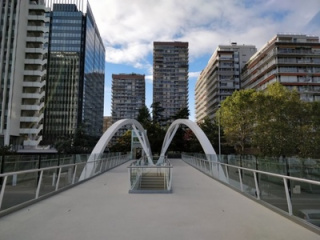
The La Défense District: A Hub of Excellence at the Heart of Innovation
The La Défense district, located within the circular boulevard, is recognized as the premier business district in Europe. This emblematic area stands out with its impressive modern towers housing the headquarters of major French and international companies. La Défense is a true symbol of innovation and economic dynamism, attracting thousands of professionals from around the world every year.
An Exceptional Living Environment
Though La Défense is primarily a business district, it remains an exceptional living environment for those who work there. The towers offer breathtaking panoramic views of Paris and the Bois de Boulogne, allowing residents to enjoy a unique living environment.
High-Quality Infrastructure and Services
La Défense boasts numerous high-quality infrastructures, catering to the needs of companies and their employees. Shopping centers such as Les Quatre Temps and the CNIT offer a wide range of shops, restaurants, and services, making daily life easier for residents and workers alike.
A Cultural and Artistic Center
La Défense is not just an economic center; it's also a vibrant cultural hub. The district regularly hosts contemporary art exhibitions, shows, and large-scale cultural events. Outdoor artworks, such as the Grande Arche and numerous sculptures scattered throughout the area, create a unique and inspiring atmosphere.
Exemplary Accessibility
La Défense enjoys exemplary accessibility thanks to a well-developed public transportation network. The district is served by several metro lines, RER, and tramway, as well as numerous bus lines, facilitating travel to and from the area.
A Limited but Prestigious Real Estate Offer
The availability of housing in La Défense is limited due to the predominance of offices and business towers. However, the available residences stand out for their prestige and quality. Apartments in the rare residential buildings in La Défense are prized for their stunning views and high-end amenities. These luxury properties offer an exceptional living environment, combining modern comfort with proximity to the capital's main economic hubs.
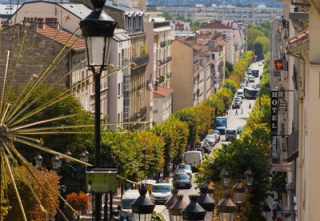
The Vieux Puteaux and Pressensé Neighborhoods: Authentic Charm in the Heart of History
The Vieux Puteaux neighborhood, along with the Pressensé district, is a historically rich and characterful area located in the heart of Puteaux. This picturesque sector offers a striking contrast to the modernism of La Défense, bringing an authentic charm and tranquility to urban life.
A Journey Through Time in Vieux Puteaux
Vieux Puteaux is the historical cradle of the town. With its cobblestone streets, townhouses, and old buildings, this neighborhood exudes a nostalgic atmosphere reminiscent of bygone villages. The buildings are often adorned with period architectural details, such as wrought-iron balconies and stone facades, which testify to the region's rich heritage.
The Pressensé District: Between Dynamism and Serenity
Adjacent to Vieux Puteaux, the Pressensé district is a sought-after residential area prized for its balance between dynamism and tranquility. It offers a wide variety of housing, ranging from modern apartments to family homes with private gardens. Residences often feature high-end amenities, such as secure parking, communal green spaces, and concierge services.
High-Quality Infrastructure and Services
The Vieux Puteaux and Pressensé neighborhoods are well-served by public transportation, facilitating travel to central Paris and other surrounding communities. Educational infrastructures, such as schools and daycares, as well as sports and cultural facilities, meet the needs of families and contribute to an exceptional quality of life.
Prestige Real Estate in Vieux Puteaux and Pressensé
The real estate market in these neighborhoods is constantly evolving, attracting more and more people in search of a peaceful living environment without being too far from the capital. The price per square meter is competitive, but interest in these areas is increasing, reflecting the demand for quality residences. There are spacious and bright apartments, often located in modern buildings with high-end amenities. Renovated townhouses and old mansions also offer charming and authentic living spaces.
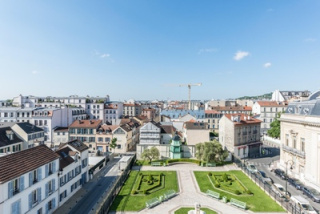
City-Centre – Colline
The Centre-Ville Colline neighborhood in Puteaux is a dynamic and sought-after area, perfectly combining urban liveliness with residential tranquility. Situated on a hill overlooking the city, this neighborhood offers stunning views of the surroundings and a privileged living environment for its residents.
A Lively Neighborhood at the Heart of the City
Centre-Ville Colline is the beating heart of Puteaux. With its numerous shops, cafés, and restaurants, the neighborhood offers a multitude of options for outings and leisure activities. The bustling shopping streets regularly host markets and local events, creating a friendly and warm atmosphere.
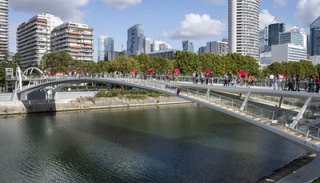
Île de Puteaux: A Tranquil Haven in the Heart of the City
The Île de Puteaux, a picturesque small island located on the Seine River, is a true haven of peace in the heart of Puteaux. This charming neighborhood, often likened to an urban oasis, offers a unique and privileged living environment, away from the bustle of the city while remaining close to major amenities.
An Exceptional Natural Setting
Île de Puteaux stands out for its exceptional natural environment. Surrounded by the calm waters of the Seine, the island features lush green spaces, riverside promenades, and panoramic views of the surrounding landscapes. Residents can enjoy this rare tranquility while benefiting from immediate proximity to business centers and Parisian cultural attractions.
A Highly Sought-After Residential Area
This residential area is renowned for its high-end properties, often boasting stunning views of the Seine and the surrounding area. Homes and apartments on the island are highly sought after for their serenity, spaciousness, and pleasant living environment. The architecture here is a harmonious blend of modern and traditional styles, creating an elegant and welcoming residential atmosphere.




